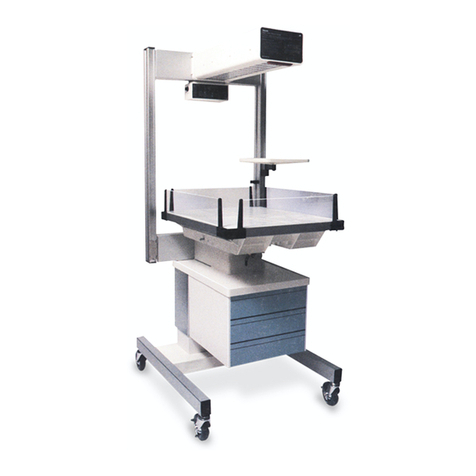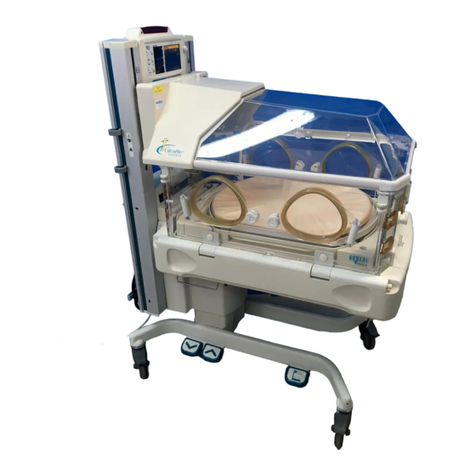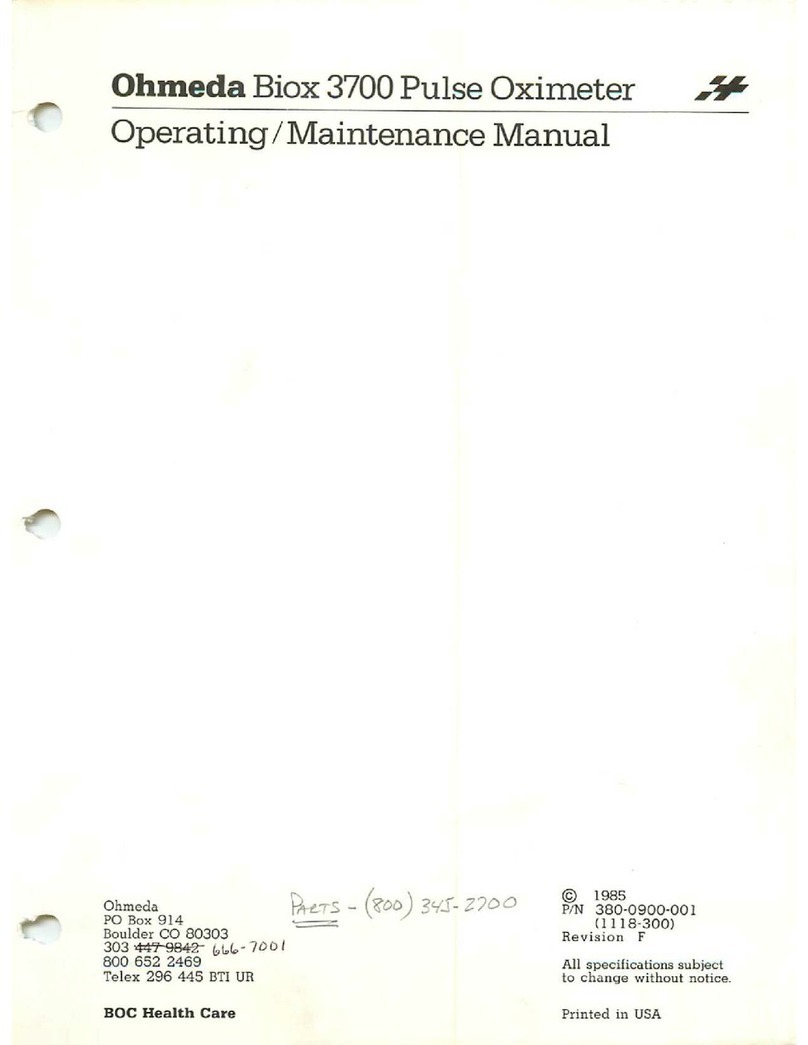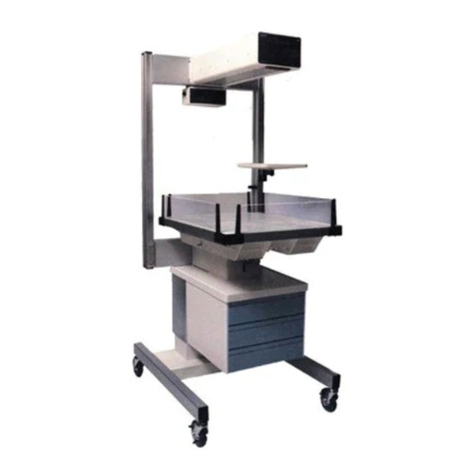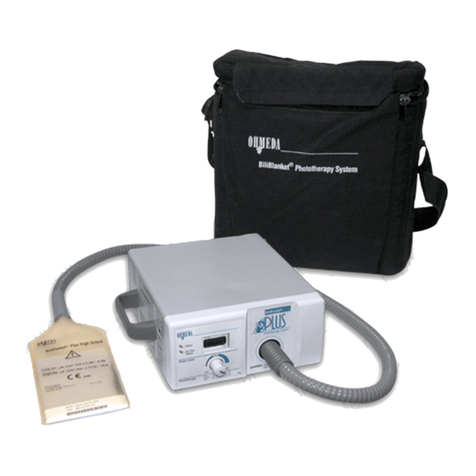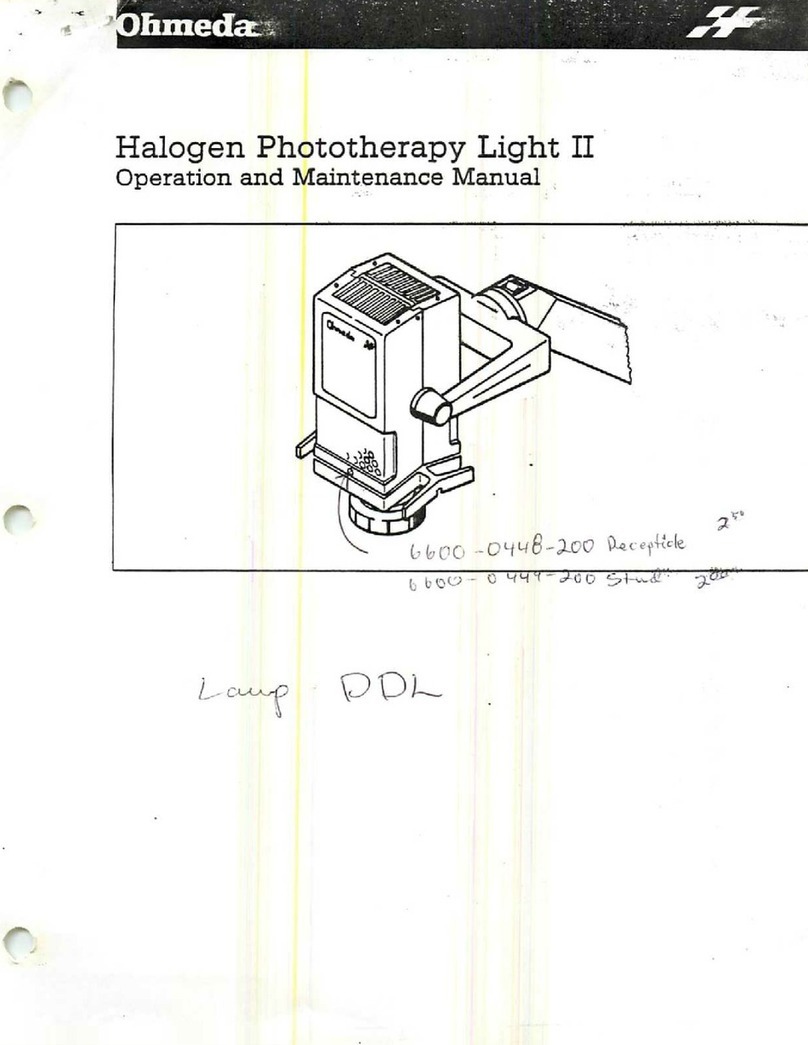
Operation
-1 6600-0 61-000 08/10/02 -1
WARNINGS wProlonged exposure to this light may harm the
unprotected eyes of the infant or the operator. For
safety, cover the infant’s eyes and avoid looking
directly at the light.
wThe bilirubin levels of infants receiving photo-
therapy should be regularly measured.
wPorphyrins are the by-products of the photochemi-
cal break down of the bilirubin molecule. In some
cases, exposure of porphyrins to phototherapy may
result in a localized reddening of the infant’s skin.
Therefore, skin assessment is indicated with all
types of phototherapy.
wLight can adversely affect drugs and other infusion
liquids. When using intravenous delivery systems
during phototherapy, shield any tubing with alumi-
num foil.
wWhen using the Giraffe Spot PT LiteTM Phototherapy
System with a radiant warmer, make sure the lens
head is not directly in the path of the radiant heat
rays, since this will block heat to the infant and may
damage the lens head.
wThe use of phototherapy equipment may raise the
patient’s temperature in a radiant warmer. The
patient’s temperature should always be monitored
while using phototherapy equipment.
wPhototherapy light is a form of radiant energy and
can raise the temperature inside an incubator’s
infant compartment.The patient’s temperature
should always be monitored while using photo-
therapy equipment.
wThe radiant energy from phototherapy lights can
increase an infant’s insensible water loss.Take
appropriate measures to maintain the patient’s fluid
balance while administering phototherapy.
wWhen using phototherapy equipment with radiant
warmers or incubators use the baby skin tempera-
ture mode (servo) unless manual mode is specifi-
cally prescribed. While both modes require patient
monitoring, the manual mode requires constant
attention. In the manual mode, you must take the
responsibility for detecting changes in the environ-
ment (drafts, direct sunlight, phototherapy light
usage, etc.) and the patient condition requiring
heater or lamp adjustments in response to these
changes. In the baby (servo) mode, the warmer or
incubator automatically adjust heat output to
maintain the desired skin temperature, reducing
(but not eliminating) the need to monitor the patient
and make adjustments to the equipment.






